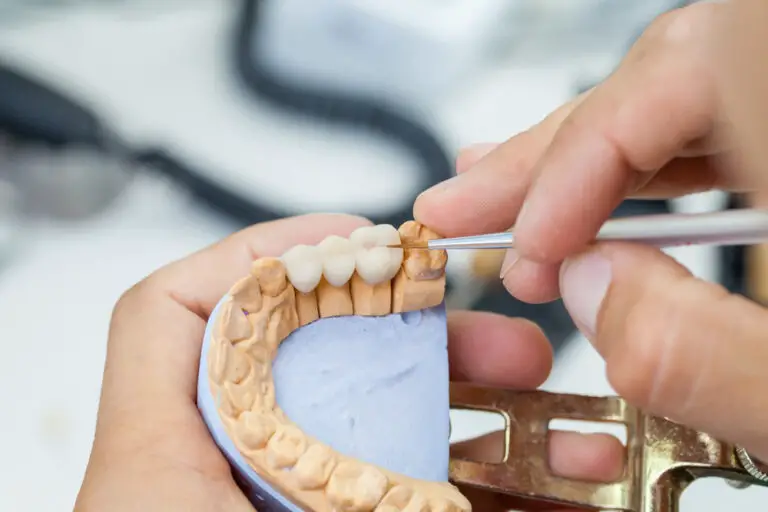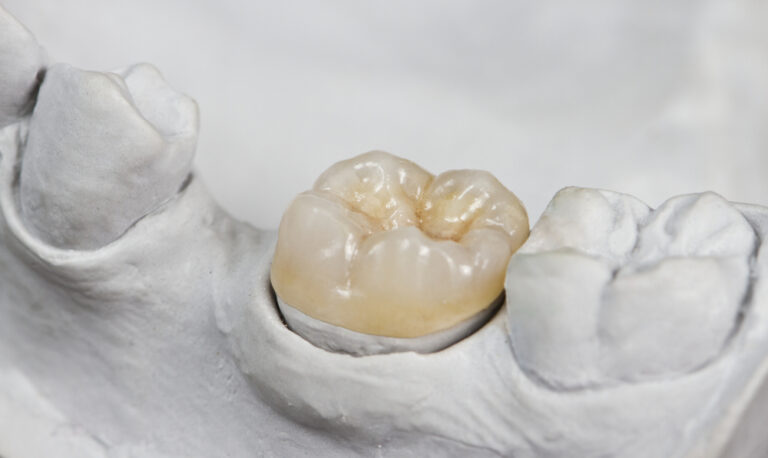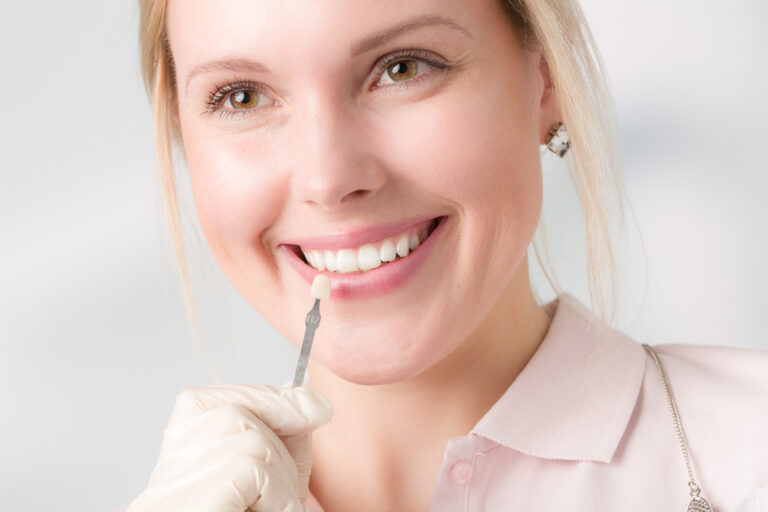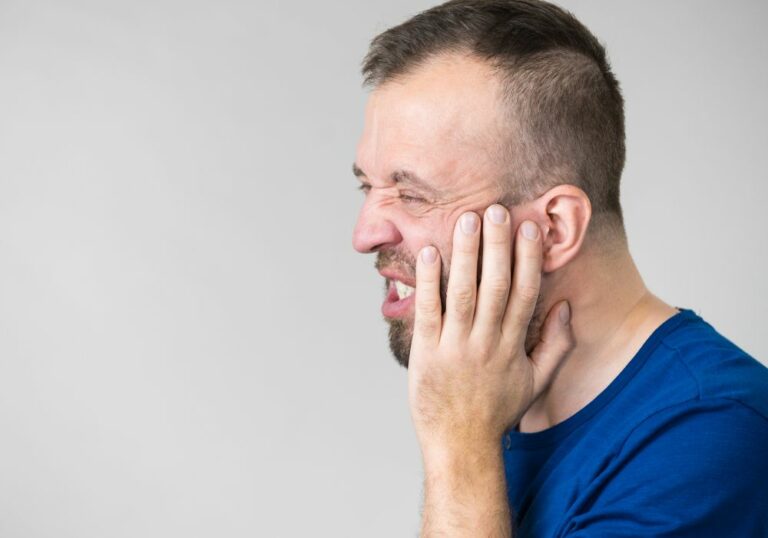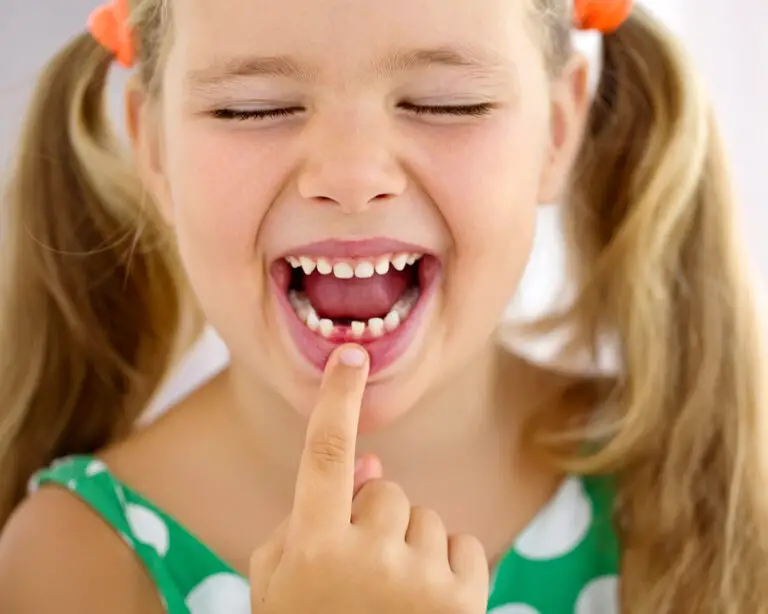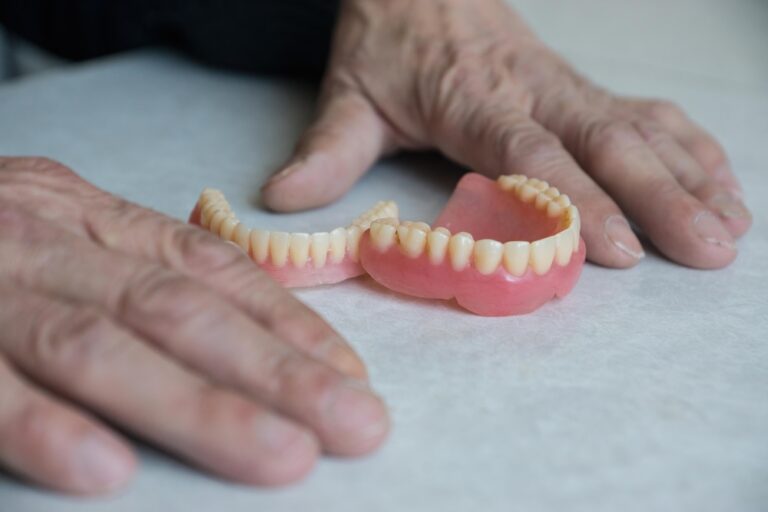The molars are the large, flat teeth at the back of the mouth used for chewing and grinding food. Adults normally have 12 molars, with 6 upper molars and 6 lower molars. The molars include the premolars (bicuspids), second molars, and third molars (wisdom teeth).
Molar pain or discomfort is very common. Given how much we use our back teeth for chewing hard or sticky foods, they are prone to problems. Molar pain can vary from mild sensitivity and aching to severe, sharp pain depending on the cause. Some common reasons molars may start to hurt include:
- Tooth decay
- Damaged dental fillings
- Cracks or fractures in the teeth
- Infection or inflammation in the tooth pulp
- Bruxism (teeth grinding or clenching)
- Impacted or erupting wisdom teeth
- Receding gums and root exposure
- Abscesses or tooth infections
Let’s explore these common causes of molar pain and discomfort in more detail.
Common causes of molar pain
1. Tooth decay
Tooth decay, also called dental caries or cavities, is arguably the most common reason for molar discomfort. It occurs when acids produced by plaque bacteria dissolve through the hard enamel surface of the tooth, causing holes or lesions to form. This often happens in the grooves and pits on the chewing surfaces of back molars, which trap food debris and plaque easily.
As decay advances through the layers of the tooth, it reaches the softer dentin underneath the enamel. The dentin contains thousands of microscopic tubes leading to the inner dental pulp which houses the nerve. At this stage, people often start noticing molar pain and sensitivity, especially with hot, cold, or sweet stimuli that flow through the exposed dentin tubules to irritate the pulp.
Without treatment, the decay process continues evolving into the inner pulp layer, blood vessels, and nerves. The pulp may become irreversibly inflamed and infected, known as pulpitis. At this stage, severe, spontaneous throbbing pain is common. The pain can linger even after the stimulus is gone. Other symptoms include bad breath, bad taste, and pain with chewing.
Early decay can be treated with fillings to remove the decay and fill the cavity. Once the pulp is infected, a root canal or extraction is usually required.
2. Damaged fillings
Over time, tooth-colored fillings and metal amalgam fillings can crack, fracture, or become defective. This allows bacteria, food debris, and saliva to seep underneath the filling, causing irritation to the tooth. Symptoms of failing fillings include:
- Sensitivity to hot and cold
- Pain when chewing or biting down
- Lingering pain when stimulus is removed
- Food catching between the teeth
The pain is often mild initially but gets progressively worse. Sometimes chunks of the filling can break off suddenly, exposing the decay underneath and leading to severe pain with eating or biting. Defective fillings need to be replaced to prevent worsening decay and bacterial invasion of the tooth pulp.
3. Cracked or broken teeth
Cracks or fractures in the molars make them more prone to developing infections and pulp inflammation. There are several types of cracks including:
- Craze lines – superficial enamel cracks from trauma
- Fractured cusps – broken chunks of enamel
- Split tooth – crack extends from crown down the root
- Vertical root fracture – crack through tooth root
Grinding teeth, chewing hard foods like candy or ice, and trauma from sports or accidents can all cause cracks in molars. As the cracks widen and deepen over time, they allow irritants like bacteria, fluid, and food debris into the inner layers of the tooth, including the pulp.
Symptoms of a cracked molar include:
- Pain when chewing or biting down
- Sensitivity to hot and cold
- Pain when releasing bite pressure
- Pain when eating hard or crunchy foods
If the crack extends down to infect the pulp, it often dies, causing severe throbbing pain. This requires root canal treatment or extraction. Dental crowns are used to stabilize cracked teeth and prevent further damage.
4. Pulp infection

Each tooth has a soft tissue pulp inside containing nerves and blood vessels. The pulp can become infected and inflamed, known as pulpitis. This commonly results from untreated tooth decay, cracks, trauma, or injury to the tooth. Symptoms of an infected molar pulp include:
- Severe spontaneous pain that lingers after stimulus is gone
- Pain when drinking hot or cold liquids
- Pain that wakes you up at night
- Pain when biting down
- Swelling around gum line
Pulp infections need immediate dental treatment, otherwise they can spread causing tooth loss or systemic illness. The infected pulp is removed with a root canal procedure. Alternatively, the tooth may be extracted if it is deemed non-restorable.
5. Bruxism and teeth grinding
Bruxism involves involuntary grinding, clenching, or gnashing of the teeth. It often happens during sleep, known as sleep bruxism. People may also clench or grind their teeth unconsciously during the day. The habit puts a lot of pressure on the molars and can cause various problems including:
- Tooth wear, flattened cusps
- Chipped or cracked tooth enamel
- Loose or damaged fillings/crowns
- Sore, overworked jaw muscles
- Headaches and ear pain upon waking
The excessive forces from bruxism result in friction and trauma to the molars. People with bruxism often wake up with a dull throbbing ache or soreness in their molars and jaw. The pain is from overusing the chewing muscles. Habitual grinding can also lead to pulp damage, inflammation, and increased sensitivity.
Using a custom nightguard helps prevent bruxism from damaging teeth at night. Botox injections in the jaw muscles may also be helpful for alleviating grinding and clenching.
6. Impacted wisdom teeth
The third molars or wisdom teeth are the final set of molars which erupt between ages 17-21 years. They often don’t have enough room to come in properly due to lack of space and become impacted against the other teeth. Symptoms of impacted wisdom teeth affecting the adjacent molars include:
- Pain, inflammation, or soreness around the wisdom tooth site
- Damage or decay to the neighboring molars
- Swelling of the gums
- Headaches and jaw pain
- Difficulty opening mouth fully to bite down
As the impacted wisdom tooth tries to erupt through the gums, it can put pressure on the nearby molars. This can cause infection of the gum lining around the second molars. Removing impacted wisdom teeth through extraction often relieves the symptoms.
7. Gum disease
Periodontal or gum disease involves infection and inflammation of the gums and supporting bone structures. It’s caused by a buildup of plaque bacteria on the teeth. The bacteria release toxins that inflame the gums.
In gingivitis, the earliest stage, the gums become puffy and red and bleed easily. Without treatment, it can advance to periodontitis where the gums pull away from the teeth and the bone breaks down. This can lead to loose teeth, abscesses, and tooth loss.
Symptoms affecting the molars include:
- Swollen, tender gums
- Bleeding when brushing
- Bad breath or taste
- Teeth feeling loose
- Changes in bite alignment
- Pain or sensitivity when eating
Daily flossing, brushing, and professional dental cleanings help treat and prevent gum disease. Advanced cases require deep cleaning below the gumline to get rid of bacteria before further bone loss occurs.
When to see a dentist?

It’s important to have a dentist promptly evaluate any molar discomfort, especially if it is severe, persistent, or interferes with eating and sleep. Catching dental problems like decay and cracked teeth early allows for more conservative treatments like fillings and crowns.
Delaying treatment allows the pulp to become infected, necessitating root canals or tooth extraction. For mild sensitivity, using desensitizing toothpaste or over-the-counter pain medication can temporarily relieve symptoms. But make sure to still follow up with your dentist.
Diagnosis and treatment overview
The dentist uses several diagnostic tools to determine the cause of molar pain:
- Clinical exam checking for visual signs of decay, cracks, wear
- Patient history – discussing symptoms, onset, duration
- X-rays to see below the tooth surface
- Biting and percussion tests
- Cold stimulation test
- Measuring gum pocket depths
Treatment options depend on the diagnosis but may include:
- Fillings: Removing decay and filling the cavity with composite resin or amalgam materials.
- Root canal: For inflamed or infected pulp; removes all infected pulp and seals interior of tooth.
- Crown or onlay: For protection and restoration of a tooth severely damaged by decay. The crown covers the entire visible tooth.
- Tooth extraction: Removing the tooth if the decay or damage is too extensive to repair.
- Night guard: For bruxism and teeth grinding; prevents wearing down teeth during sleep.
- Gum disease treatment: Professional cleanings, plaque removal, and sometimes antibiotics or gum grafts.
- Wisdom tooth removal: Taking out impacted third molars if they are causing damage to adjacent teeth.
The prognosis depends on the specific problem and when you seek treatment. Early intervention leads to better outcomes. Ignoring advanced decay or fractures may make the tooth non-restorable.
Prevention tips
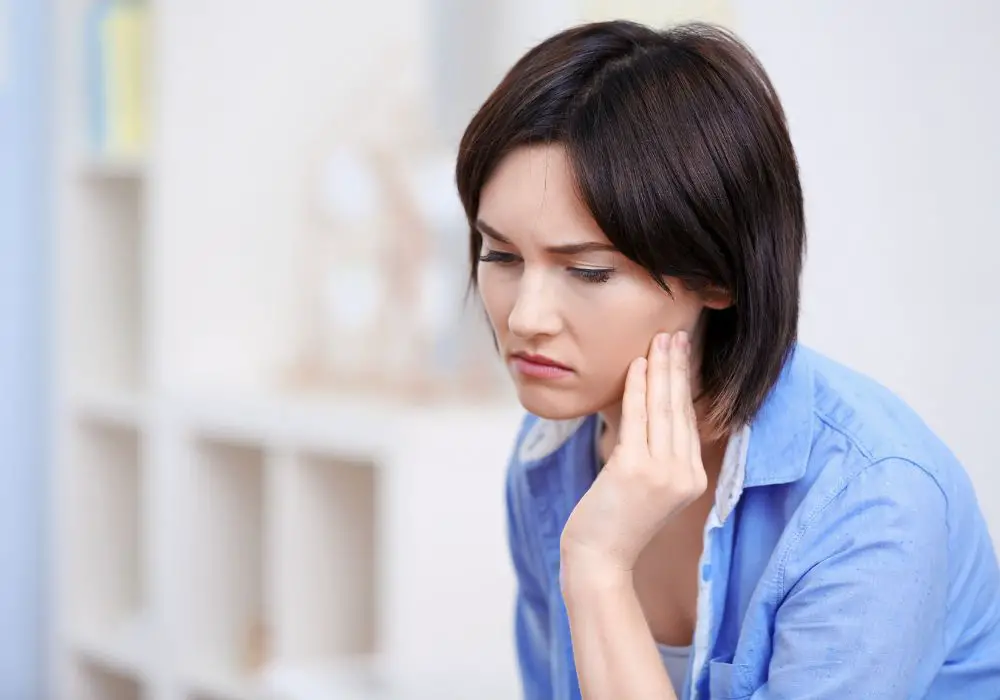
Practicing excellent daily oral hygiene and getting regular dental cleanings can help prevent many molar problems. Prevention tips include:
- Brush gently 2-3 times a day with soft bristle toothbrush
- Floss at least once daily to clear out food between teeth
- See the dentist every 6 months for oral exam and professional cleaning
- Use antiseptic or fluoride mouthwash to kill bacteria
- Limit sugary and acidic foods and drinks that can damage enamel
- Avoid hard foods that could crack weakened teeth
- Drink water after eating to rinse acid away and prevent decay
- Use mouthguard at night if you grind teeth
- Quit smoking to lower gum disease risks
Sealing pits and fissures in molars can protect against decay. Talk to your dentist about options to reduce molar discomfort if sensitivity is an ongoing issue. With proper home care and regular dental visits, molars should remain healthy and pain-free.
Frequently Asked Questions
1. Why do my molars hurt when I bite down or chew food?
Pain when biting or chewing is most often caused by problems like tooth decay, cracked teeth, bruxism/grinding, or gum disease. The pressure of the jaw closing can irritate exposed dentin and nerve endings in the tooth. Fractures or loose teeth may shift or move when biting, also causing discomfort. See your dentist to determine the exact cause.
2. My molar hurts when I drink or eat hot or cold foods – what does this mean?
Sensitivity to hot and cold liquids or foods typically indicates tooth decay has reached the inner layers of the tooth containing the nerves. It can also signal a crack, fracture, or gum recession allowing dentin exposure near the tooth roots. The rapid temperature changes provoke fluid shifts inside the tooth that stimulate nerve pain.
3. What causes sudden, sharp molar pain that comes and goes?
Intermittent, severe molar pain that comes on spontaneously then fades is often caused by advanced tooth decay reaching the pulp or irreversible pulpitis. The nerve tissue deep inside the tooth becomes severely inflamed. The sudden pain comes from pressure building up inside the confined pulp chamber unable to drain. This requires urgent dental treatment.
4. Why does my molar hurt when I release my bite pressure and stop chewing?
Pain when releasing bite pressure points to a condition called reversible pulpitis. The inner pulp tissue is mildly inflamed, often from decay beginning to reach the dentin layer underneath the enamel. The pain likely results from fluid moving around inside the tiny dentin tubules. Getting a filling promptly can help prevent worsening damage.
5. What does it mean if my molar hurts only when chewing on it?
Discomfort or pain isolated to one molar when chewing or biting down is most likely caused by a cracked or fractured tooth. The fracture allows bacteria, food debris, and temperature extremes inside the tooth which irritates the nerve. Infected cracks need root canal treatment or extraction. Dental crowns can protect and stabilize minor cracks from worsening.

